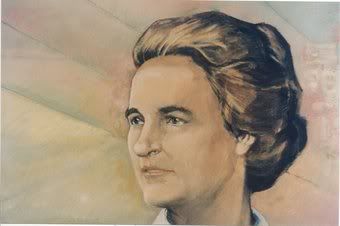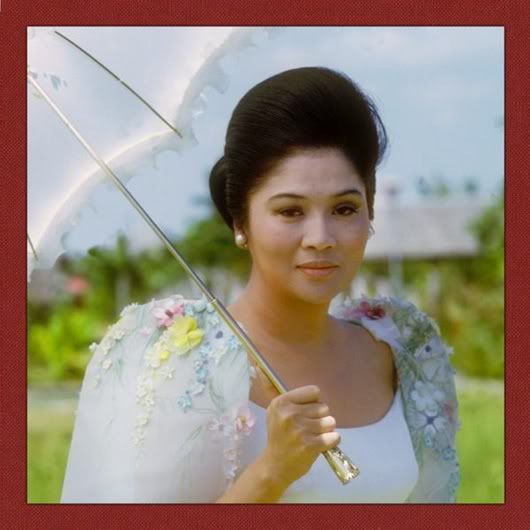By: inoljt, http://mypolitikal.com/
One of the phenomenons of the twentieth century has been the rise of the dictator. Dictators rule countries undemocratically and usually until death, crushing the opposition. Unlike the kings or emperors of old, these men generally don’t have any family linkage with previous rulers.
Notice the gender-specific word ”men.” All dictators have been male, without exception. A woman has never ordered the army to crush nascent protests against her authoritarianism. Nor has a woman ever led a coup to overthrow a democratically elected government, replacing its rule by her own.
More below.
As the above examples indicate, dictators are generally strongly linked with the army. They generally rise through the army and enjoy its support. There is no institution more heavily dominated by males in society than the army; indeed, until recently the very concept of a female soldier was unthinkable (and still is in many countries). Thus the lack of female dictators.
There are, however, a number of women who have come pretty close to being dictators. Here’s a list, and it’s quite interesting:
Indira Gandhi
Indira Gandhi (no relation to the most famous Gandhi) ruled as Prime Minister of India during prolonged periods from the 1960s to the 1980s. She came to power as the daughter of Jawaharlal Nehru. Nehru, an independence hero, governed India as the head of the Indian National Congress during his lifetime. Congress was and still is the dominant political party in India. It had and still has a nasty habit of nepotism. Since Indira was the daughter of Nehru, leadership of the party fell to her.
As leader of India, Indira Gandhi did many good things and many bad things. Economically speaking, she seemed to be more in the business of giving poor people fish than teaching them how to fish.
But Indira Gandhi is most famous for her State of Emergency. In 1975 Indira declared a state of emergency, giving her dictatorial powers. Civil liberties and democracy was suspended during The Emergency. Opposition leaders were arrested. A controversial family planning program was put in place, which led to many Indians being unwillingly sterilized.
In this sense Indira Gandhi, although elected democratically, was dictator of India for two years.
Fortunately for India, Indira Gandhi ended The Emergency in 1977. She proceeded to hold elections, lost them, and to her credit stepped down. Indira Gandhi would later return to office. She was assassinated by Sikh bodyguards after taking controversial military action against Sikh militants.
Jiang Qing
Jiang Qing was a dominant figure in Chinese politics during the Cultural Revolution and immediately after Mao Zedong’s death. She was the fourth wife of Mao Zedong, and the only one who played a political role.
At first Mao promised that Jiang Qing wouldn’t be involved in politics, and for a while he kept that promise. During the Cultural Revolution, however, Qing rose to power. She generally took a hard-line stance on policy, opposing for instance economic reforms and determinedly prosecuting her political opponents. She was widely disliked.
Shortly after Mao’s death in 1976, Qing lost power. In 1981 she was prosecuted as part of the “Gang of Four,” scapegoats for the excesses of the Cultural Revolution, and spent most of the rest of her life in prison.
Elena Ceaușescu
Elena Ceaușescu was the wife of Romanian Communist dictator Nicolae Ceaușescu, who ruled Romania during the latter period of the Cold War. Like Jiang Qing, Elena Ceaușescu gained political power and political positions during this period. However, she had far less influence; unlike Qing, Elena Ceaușescu never directed attacks against political opponents.
The Romanian population widely hated her. In the 1989 revolution, Elena Ceaușescu attempted to flee the country with her husband. She was caught, subject to a show trial, and shot.
Imelda Marcos
Like the two individuals above, Imelda Marcos gained her power through being the wife of a military dictator. Imelda Marcos was the wife of Ferdinand Marcos, who ruled over the Philippines from the 1960s to the 1980s. Like Elena Ceaușescu, Imelda Marcos used her position to gain power and political positions. She was quite infamous for her collection of shoes and for the fortune she gained during the dictatorship.
However, Imelda Marcos wasn’t as disliked by Filipinos as the two previous individuals listed. After the fall of the dictatorship in 1986, Imelda Marcos went into exile. She returned in 1991 and started a political career. Today Imelda Marcos is a congresswoman in the Philippines House of Representatives, where she last won 80% of the vote. It’s doubtful that Jiang Qing or Elena Ceaușescu could have won an election anywhere in their respective countries.
Conclusions
There’s a pretty obvious pattern here: all the female “dictators” listed above gained power through family connections. This is a common pattern; throughout history, many of the powerful female political leaders have gained power as wives, daughters, and sisters of male political leaders.
Interestingly, this list is dominated by the Asian continent. One would expect more African and South American countries to be represented. This might be a pattern, or it might just be chance.
Of all these people, Indira Gandhi comes closest to being a dictator. Unlike the others, Indira Gandhi was legitimately the most powerful person in the country. She was the one in control of the army, and she could and did use it to commit multiple human rights violations.
One wonders who will be the next Indira Gandhi.



